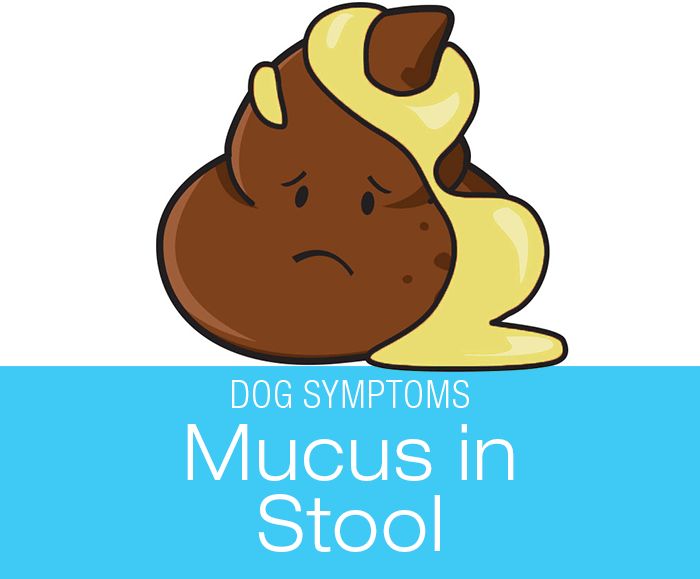Have you ever wondered what your furry companion’s waste reveals about their well-being? A slimy coating or unusual texture might hold clues worth understanding. While occasional jelly-like substances in stool can be part of normal digestion, persistent changes often signal deeper issues.
Healthy pets naturally produce small amounts of clear or pale lubricant to ease bowel movements. But when this substance becomes excessive, discolored, or paired with symptoms like vomiting, it’s time to pay attention. Bright yellow streaks or pinkish tints could indicate parasites, dietary problems, or inflammation.
Proactive owners should monitor consistency and frequency while tracking energy levels and appetite. Temporary shifts might resolve on their own, but recurring patterns demand professional insight. Veterinarians recommend documenting observations with photos and notes before appointments.
This guide simplifies how to distinguish harmless variations from red flags. You’ll learn to spot warning signs, adjust diets cautiously, and collaborate effectively with animal care experts. Knowledge transforms worry into action—let’s explore how to keep your companion thriving.
Understanding Mucus in Dog Poop: Normal vs. Concerning Signs
A closer look at your furry friend’s bowel movements can uncover vital health insights. While occasional slimy textures might seem alarming, they often reflect natural bodily functions. Recognizing the difference between routine variations and red flags helps owners respond appropriately.
Normal Digestive Lubrication
The intestines naturally produce a slippery substance to move waste smoothly. This clear or pale coating typically appears in small amounts. Temporary increases might follow dietary adjustments or mild stomach irritation.
Warning Signs and When to Monitor
Persistent changes warrant attention. Thick, discolored coatings—especially yellow or green hues—paired with blood streaks suggest inflammation or infection. Watch for vomiting, lethargy, or appetite shifts alongside irregular stools.
Stressful events or sudden food switches often trigger temporary digestive upsets. Track frequency and texture for three days. If patterns don’t stabilize, consult your vet. Early intervention improves treatment outcomes for underlying causes like parasites or allergies.
Maintaining a consistent, high-quality diet supports intestinal health. Document observations with photos and dates to help professionals assess severity. Trust your instincts—when symptoms persist, expert guidance brings peace of mind.
Common Causes of Mucus in Dog Poop
Understanding why certain substances appear in your pet’s stool can empower owners to take timely action. While temporary shifts may resolve independently, recurring issues often stem from specific triggers. Identifying these sources helps address concerns before they escalate.
Dietary Triggers and Sensitivities
Eating inappropriate items like grass, garbage, or sudden diet changes irritates the digestive tract. This irritation can lead to protective mucus secretion. Food allergies—commonly linked to proteins like chicken or dairy—also spark inflammatory reactions. Chronic sensitivities may require elimination diets to pinpoint culprits.
Infectious Agents and Parasitic Invaders
Bacterial infections from E. coli or Salmonella trigger intense intestinal inflammation. Viral threats like parvovirus attack the gut lining, worsening symptoms. Parasites such as Giardia cling to the intestines, disrupting nutrient absorption. Whipworms burrow into colon walls, causing bloody stools and dehydration.
Persistent vomiting alongside irregular stools often signals severe infections or parasitic overload. These cases demand immediate veterinary care to prevent complications. Early treatment reduces long-term damage and restores digestive balance.
Role of Stress and Inflammatory Disorders in Canine Health
Could your pet’s anxiety be affecting more than just their behavior? Emotional strain and chronic inflammation often manifest through digestive changes. Conditions like colitis and inflammatory bowel disease (IBD) frequently emerge as hidden culprits behind irregular stool textures.
Stress-Related Digestive Disruptions
Major routine shifts—like moving homes or introducing new pets—can trigger colitis flare-ups. This condition inflames the colon, causing excess lubrication production. Diarrhea paired with jelly-like substances often signals this temporary imbalance.
Chronic Inflammatory Conditions
IBD involves persistent intestinal irritation that disrupts nutrient absorption. Over time, inflamed tissues secrete protective coatings to shield damaged areas. Blood streaks or unusual colors alongside slimy textures warrant veterinary testing for underlying disorders.
Consistency is key for prevention. Establish predictable feeding schedules and quiet retreat spaces during chaotic events. Calming supplements or pheromone diffusers may ease separation anxiety. Documenting behavioral patterns helps vets tailor treatment plans effectively.
Navigating Veterinarian Diagnosis and Treatment Options
When unusual symptoms persist, partnering with your vet becomes essential. Professionals use targeted strategies to pinpoint causes and restore digestive balance. Early intervention often prevents minor issues from escalating into chronic conditions.
Diagnostic Exams and Fecal Analysis
Veterinarians typically start with fecal tests to check for parasites or bacterial overgrowth. Blood work reveals infections, inflammation, or organ dysfunction. Imaging tools like X-rays or ultrasounds evaluate the digestive tract for obstructions or structural abnormalities.
Medication, Dietary Therapy, and Support
Treatment plans address root causes—antibiotics combat infections, while anti-inflammatory drugs soothe irritated tissues. Prescription diets often ease strain on the digestive system. For chronic diseases like IBD, immunosuppressants may stabilize long-term health.
Timely care improves outcomes significantly. Delays risk complications like dehydration or nutrient deficiencies. Follow your vet’s guidance closely, whether administering medication or transitioning foods. For mild cases, they might suggest expert advice and remedies alongside monitoring.
Collaboration ensures tailored solutions. Share detailed observations about appetite, energy, and stool changes. This teamwork helps refine treatments over time, fostering your pet’s recovery and comfort.
Home Remedies, Probiotics, and Nutritional Support
Supporting your pet’s digestive comfort often begins with simple adjustments at home. For mild cases without concerning symptoms, targeted nutritional strategies can stabilize irregular patterns. These methods prioritize gentle nourishment and microbial balance to encourage natural recovery.
Bland Diet Solutions
A temporary switch to easily digestible meals reduces strain on sensitive systems. Boiled white chicken and plain rice provide lean protein and carbohydrates, while pumpkin adds fiber to firm stools. This combination soothes irritation and supports consistent bowel movements. Transition back to regular food over several days to prevent further upset.
Probiotic and Supplement Strategies
Probiotics like Saccharomyces boulardii or Lactobacillus acidophilus replenish beneficial gut bacteria, easing inflammation. Fiber supplements such as psyllium husk improve stool texture without harsh additives. Always introduce new supplements in small amounts, monitoring responses closely.
Consult your veterinarian before making dietary changes or starting supplements. They can confirm whether home care aligns with your pet’s needs. Gradual adjustments paired with professional guidance often yield the safest, most effective results.
Long-Term Management and Preventative Care for Mucus in Dog Poop
Sustaining digestive wellness requires ongoing attention to daily habits and nutrition. Proactive strategies help minimize flare-ups while supporting overall gut resilience. Tailored routines become particularly valuable for pets with chronic sensitivities or recurring issues.
Maintaining a Stable, Allergy-Friendly Diet
Consistent meal plans reduce intestinal strain. Transition pets gradually to hypoallergenic formulas if food sensitivities exist. Limited-ingredient diets with novel proteins like duck or venison often ease symptoms in dogs prone to inflammatory bowel disease.
Track stool texture and frequency weekly. Softened consistency or occasional diarrhea might signal needed dietary tweaks. Document changes alongside new foods or environmental shifts to identify patterns.
Annual vet exams catch subtle health shifts early. Bloodwork and fecal tests monitor inflammatory markers and nutrient absorption. For chronic conditions, veterinarians may recommend prescription diets or supplements to fortify gut health.
Stick to fixed feeding schedules and avoid table scraps. Stress reduction techniques like puzzle feeders or calming pheromones complement nutritional stability. This multi-layered approach builds lasting digestive comfort while preventing recurrent episodes.
Final Reflections on Your Dog’s Digestive Health
Your pet’s digestive health is a window into their overall well-being. While a small amount of lubricant in stool is typical, sudden increases or unusual textures often signal underlying issues. Recognizing shifts early allows owners to address common causes like dietary sensitivities, parasites, or stress-related bowel inflammation before complications arise.
Consistent monitoring helps distinguish temporary upsets from chronic conditions. Track stool consistency, frequency, and energy levels, noting any irregularities in bowel movements. If changes persist beyond two days—especially alongside vomiting or lethargy—consult your veterinarian promptly. Open communication ensures tailored care plans that prioritize long-term wellness.
Preventative strategies play a key role. High-quality diets, gradual food transitions, and stress reduction techniques support healthy bowel function. For mild episodes, explore common causes of digestive upset to guide initial responses. Remember: proactive observation paired with professional guidance keeps minor concerns from escalating into serious health challenges.
FAQ
What causes mucus in a dog’s stool?
Common triggers include dietary changes, food sensitivities, intestinal parasites like giardia, or stress-related colitis. Infections or chronic conditions like inflammatory bowel disease (IBD) may also contribute to excess mucus production.
When should I take my dog to the vet for mucus in their poop?
Seek veterinary care if you notice blood, persistent diarrhea, vomiting, lethargy, or appetite loss. These signs may indicate parasites, infections, or serious gastrointestinal disorders requiring professional diagnosis.
Can stress cause mucus in a dog’s bowel movements?
Yes. Stress colitis often leads to temporary mucus-coated stools due to disrupted gut balance. Events like boarding, travel, or routine changes can trigger this reaction, which typically resolves within 1-2 days with calm environments.
What tests will a vet run for mucus in dog stool?
Vets often perform fecal exams to check for parasites, bloodwork to assess inflammation, and imaging like ultrasounds. For chronic cases, endoscopic biopsies might be recommended to diagnose conditions like IBD.










Leave a Comment